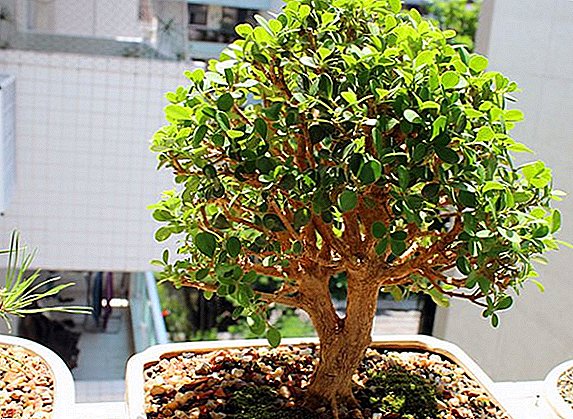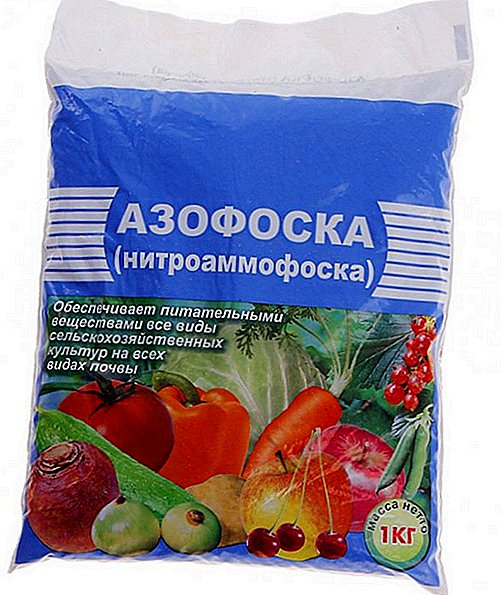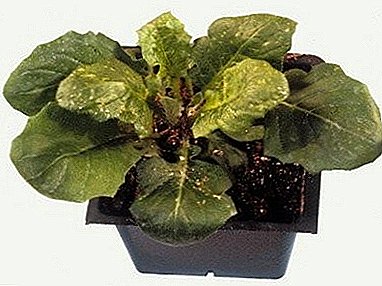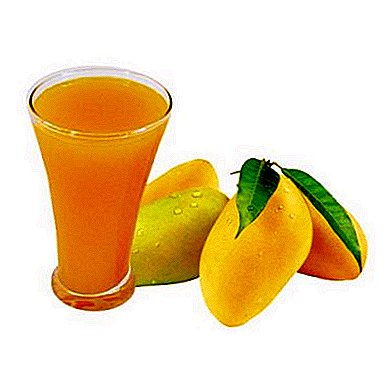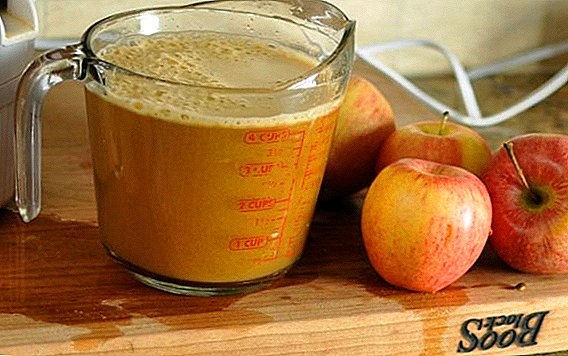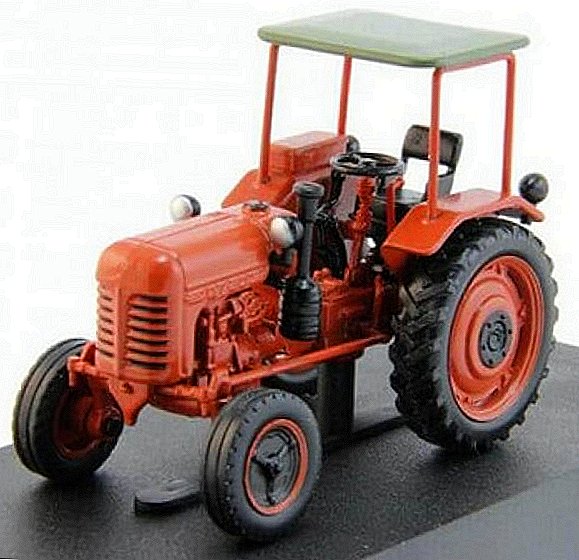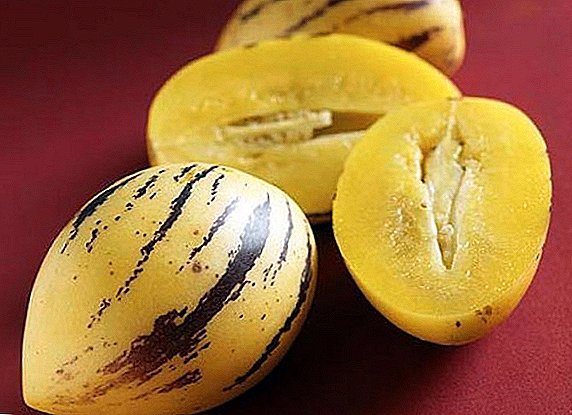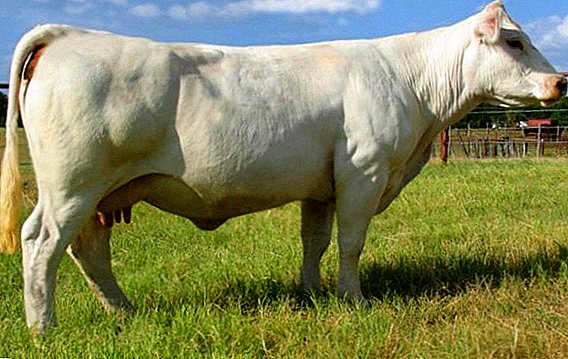 Among the massive and representative breeds of cows, Charolais stands out in particular.
Among the massive and representative breeds of cows, Charolais stands out in particular.
Its representatives belong to the meat direction and allow stably to get a fairly good yield of meat.
To keep such large animals is not easy, but all the work will certainly pay off, which is easy to see, more carefully acquainted with the breed characteristics of these cows.
History of origin
The history of breeding cows Charolais has more than one century, because for the first time animals appeared in France, at the beginning of the 17th century. Progenitors of modern Sharolese cows are considered to be local varieties with different levels of productivity and exterior features.  At the official level, a new breed was recognized only in 1864, then the first breed books of accounting began to be created.
At the official level, a new breed was recognized only in 1864, then the first breed books of accounting began to be created.
True, it should be noted that the first Charolais cows differed significantly from the modern representatives of the breed, and successfully combined meat and milk productivity, not to mention good traction qualities (for a long time the bulls were kept for physical work).
Despite the fact that in those days, the weight and development of the musculature of animals were somewhat inferior to modern values, but strong immunity and endurance fully compensated for this.
Scientists moved to the new breeding plans for improving the breed only at the beginning of the twentieth century, when the existing cattle in the province of Charol began to cross with the Shortgon breed and Simmentals.
Did you know? Charolais breed cows were very actively crossed with Brahmins, moreover, breeding work was carried out so intensively that a new cross - fury appeared in Australia. To get such an animal is very difficult, because in order to get to the stud book, it must flow 75% of Charolais’s blood and only 25% of Brahmin’s.
From this point on, the emerging generation began to be selected on the basis of the growth and the total mass of animals, and after the war the first breeding enterprises, technical centers and even their own breed federation appeared. On the territory of Russia and Ukraine Charolais fell only at the beginning of the two thousandth years and still occurs infrequently. 
Description and appearance
Charolais belongs to one of those breeds, which is characterized by a pronounced sexual dimorphism of its members. Simply put, the female is inferior to the male in size and external features of body build, losing a little on its background. Consider the features of each sex more closely.
The meat breeds of cattle also include Kazakh white-headed, limousine, Hereford, Highland, Kalmyk, and Shorthorn.
Bull
The weight of the largest bull of this breed reaches a value of 2 tons, but this is the maximum performance and most other males are usually less - about 1000-1600 kg. However, they all have a very massive physique and grow to 165 cm at the withers.
Among the exterior features of animals are the following:
- Housing rectangular Sharolese bull, slightly elongated, widened in the chest.
- The total length of the torso of the male is 220 cm, with a chest size of 90 cm.
- In purebred specimens well defined muscle mass, with bumps in the chest and thighs. The extremities of both males and females are low, but strong, and the ratio of the back and front of the torso is almost the same.
- Head - relatively small, with a moderately pronounced frontal lobe and large horns on the skull.
- Leather - quite elastic, and around the neck it is collected in large folds with short hairs.
- Fat accumulation under the skin is not as pronounced as in many other meat breeds, and the main energy that the bull's body receives from food is expended on gaining muscle mass.
Animals grow up to two years of age, so they can hardly be called early, even with a good meat yield in the age of one year. 
Cows
Among the cows of the Charolais breed there are also record-holder by weight indicators: some animals may exceed the values of 800 kg. However, the main part of the livestock will adhere to the weight range in the range of 600-750 kg (with growth of 1-1.55 m), but even these values are quite enough if you grow an animal for meat.
Like the bulls, the color of cow hair varies from milky with a creamy shade to more brownish tones, although females are more often lighter than males.
Important! The external defects of the breed include a roof-shaped sacrum, a loose body constitution, a soft back and forked shoulder blades.
As for exterior features, first of all, females are distinguished:
- broad, almost always flat back;
- long croup (but not as massive as a bull)
- mild bowl-shaped udder (although it may have a goat shape);
- small head with inconspicuous horns.

Calves
Charolais cows produce fairly large calves with a body weight of 55 to 70 kg (the minimum value is 30 kg). However, this is not so much a plus as a minus, since the number of fatal cases has been increased: the safety of the young at birth rarely exceeds 92%, and no more than 90% of all calves live to six months of age.
The adverse effects of such genera and for the cow itself: frequent cases of detention of the placenta and the formation of cysts on the ovaries. Healthy offspring is growing rapidly and gaining weight.
The appearance of the calves of this breed is in many ways reminiscent of the exterior of many other small representatives of the meat industry, only they are given by a very light, solid color and thick, slightly wavy hair.
Unlike other breeds, Charolais calves are not recommended to be transferred to artificial nutrition early and taken away from the mother, since this is fraught with health problems. 
Meat and dairy characteristics
It is not strange, but with a good meat productivity, the Charolais breed can offer a fairly good milk yield, generally characterized by a high level of performance:
- amount of milk per year - 2000-4000 liters;
- milk fat content - 3.5–4.5%, with a protein content of 3.2–3.4;
- slaughter meat yield - up to 65%;
- meat quality and flavor characteristics are lean beef with a delicate soft taste, and these characteristics are preserved even if an elderly animal is sent for slaughter.
Did you know? To get more than 200 kg of pure meat product from one animal, the Charolais bull is fed with compound feed for at least 136 days. Interesting, but dry mixes do not give cows.
Advantages and disadvantages
Each breed of farm animals has its pros and cons, on which breeders are guided in a situation of choice. Therefore, we propose to consider the advantages and disadvantages of Charolais cows.  The undoubted advantages of these massive animals include:
The undoubted advantages of these massive animals include:
- a high level of preservation and further transfer of genetic material, with the consolidation in it of all the characteristic genetic characteristics of the breed;
- high meat indices, even among other breeds of meat;
- endurance, good adaptive capabilities that allow animals to quickly adapt to the very different conditions of detention (the exceptions are, perhaps, regions with sudden temperature changes and large sub-zero temperatures);
- the possibility of slaughtering bulls already at four months of age;
- undemanding food: if there is no access to pastures, animals will quickly gain body weight and on concentrated feed;
- preservation of the taste properties of beef, even among old representatives, regardless of the timing of slaughter.
Important! Female Charolais cows remain productive up to 15 years of age.
As for the shortcomings of breeding these large animals, among the main emit:
- the high aggressiveness of bulls and cows caring for calves, because of which they often become dangerous to humans;
- severe calving with a high mortality rate of calves and problems with the reproductive system of females, which also often leads to deaths;
- hereditary diseases that lead to heart failure in newborn calves;
- the inability to use the seed of bulls for insemination of smaller breeds and crosses, since the large size of the calf is likely to cause complications during pregnancy and during the birth itself.
 To eliminate this problem, representatives of other large breeds of meat are often used for breeding, and here are some of the most popular herefords: their calves are born smaller, but then quickly catch up in the growth of their peers from other meat breeds.
To eliminate this problem, representatives of other large breeds of meat are often used for breeding, and here are some of the most popular herefords: their calves are born smaller, but then quickly catch up in the growth of their peers from other meat breeds.The Charolais breed is a really good variant of cattle for growing on medium and large farms, but these giants are not particularly suitable for keeping in the conditions of a private farmstead: cows give little milk, and not every owner can cope with them.


